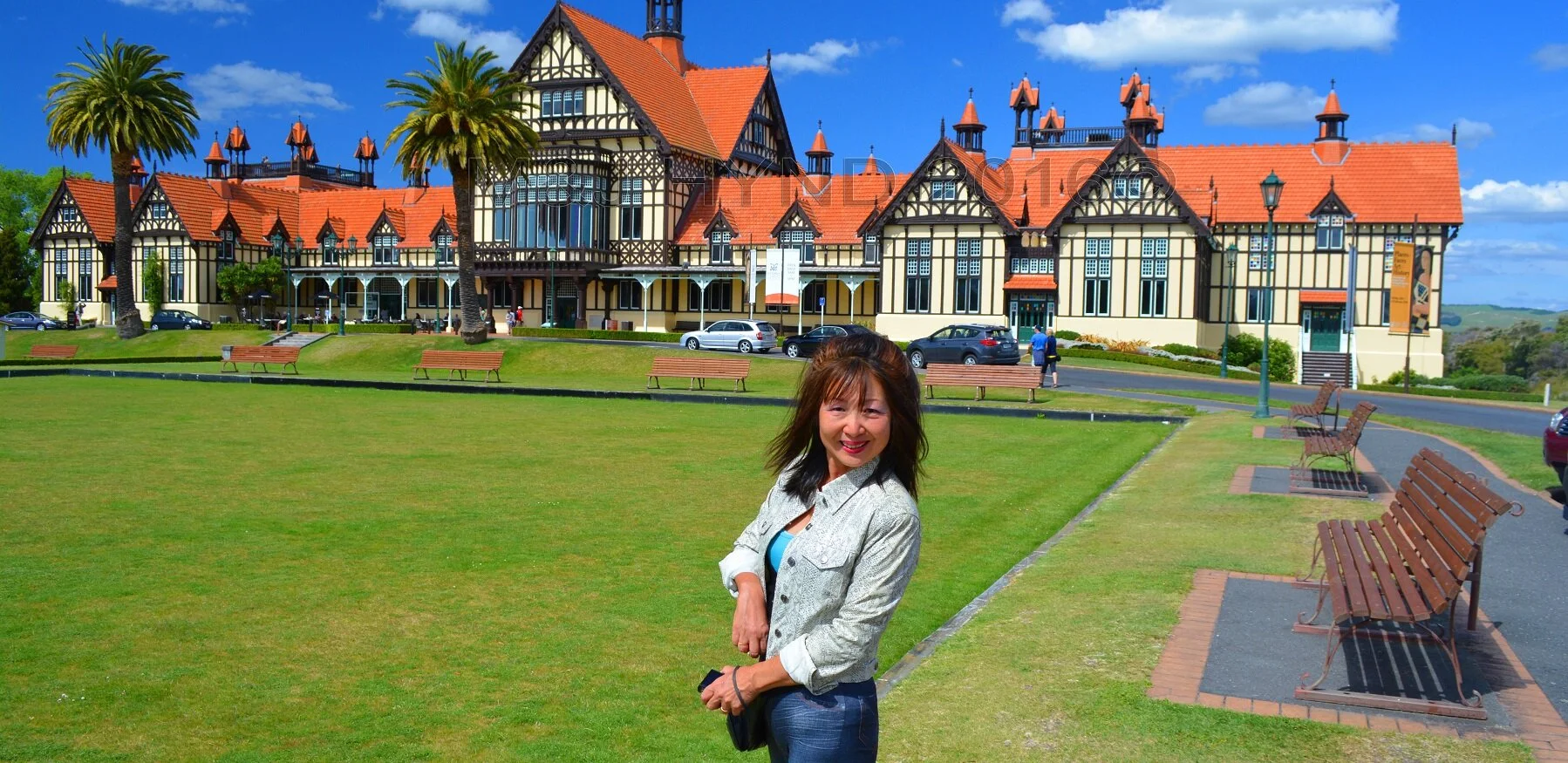NZ: Thermal Explorer - Rotorua
In Rotorua's volcanic plateau, geothermal activity is pervasive. Crystal-clear streams and magical forests, to epic biking trails and explosive geysers, bubbling mud pools, clouds of steam, and natural hot springs perfect for bathing and relaxing in. It is the cultural centre for the indigenous Maori people. Te Puia cultural centre in the Whakarewarewa valley has geysers and thermal mud pools fuelled by the area's geothermal activity.
Marvelling at the distinctive landscapes and volcanic activity within a geothermal park, what could be more enjoyable than a simple soak in a natural hot stream. Hot geysers shooting to the sky, steaming fumaroles and fissures, bubbling mud pools, geothermal springs and hot waterfalls, multi-coloured terraces and more. These were ghoulish scenarios, meant for the next days' sightseeing.
We were in Rotorua to 'get the waters' so to speak. Getting decidedly chilly days close to winter, we thought to get warmed up with a bit of pampering in Rotorua, sliding into hot springs rather than imbibing a hot toddy or mulled wine.
The hotel we booked into had a thermally heated swimming pool and a number of private spa pools. The swimming pool was great, lovely and clean, but the water temperature could have been slightly hotter. The private spa pool by comparison was small and cramped, but it was definitely hotter. Time to find some other spa options.
We went to the Polynesian Spa first but the queues put us off - maybe next time. Perhaps the next thing to visit on our list would be better. Heading towards the Government Gardens' direction, the beautifully decorated tree outside the Arts Village caught our attention. It was as if the frenetic, frenzied knit-purl fetishes were underway!
Yarnbomb Tree Project volunteers stitch hundreds of metres of colourful knitted acrylic yarn together and tie around the limbs of the large tree outside the Arts Village for the art project. The volunteers methodically stitched and wrapped hundreds of pieces of design mish-mash patterns around the tree limbs to create a vibrant covering. The kaleidoscope of colour, textures of the knitting and crochet that worked brilliantly.
Rotorua's first Yarnbomb Tree Project, marked the culmination of many hours of work, similar projects in Europe and United States in which buildings, vehicles and trees were wrapped in various material. Buildings and vehicles too, way to go!
The Government Gardens are situated on the lake's edge in downtown Rotorua. The Maori people gave 50 acres of land here to the British Crown in the late 1800s, and the New Zealand government opened a large bath house on the site, in an Elizabethan Tudor style of architecture. Very similar to the bath houses of Central Europe. The spa is no longer active, but the building has been maintained and it now the Rotorua Art and History Museum.
On entering Rotorua's Government Gardens, via the Prince's Gate Arches, you would be forgiven for thinking you had stepped into the pages of an olde-worlde English picture book. It prizes the high ceilings and grand staircases, the half-timbered exterior, wings extending north and south, gabled windows, and towers. An impressive and magnificent building, Rotorua Museum opened in the south wing and later Rotorua Art Gallery opened in the north wing, then combined to form the Rotorua Museum of Art and History. It houses an award-winning exhibition on the days when people came from all over the world to 'take the waters'.
Rotorua Art and History Museum, the Blue Baths, the Rose Gardens, Tearooms and Rotunda are all located in the Government Gardens. The Blue Baths, right in the centre of Rotorua, was something Murray had heard of, but never visited. I was intrigued by that name; it had the sounds of an Agatha Christie mystery about it.
Originally opened in 1933, the art deco Blue Baths daringly offered mixed sex bathing for the first time in New Zealand. Now the Spanish mission-styled Blue Baths is stylishly refurbished and one of the geothermally heated pools has been reopened. The other has been filled in and a roof built over the space so it is now available for private events, for example two national runway-show extravaganza, an annual wedding expo, and more.
The location is indeed superb. We got there and parked. What a lovely setting, like from another era, tall date palms graced its frontage. Inside the building, touches of art deco were evident, harking back to the romantic past. We changed, and out to the pool, and oops! It was a slight quandary as I figured out how best to get from the water’s edge into the water itself, and vice-versa. (see: stroke). There were no Roman steps, just steep swimming pool ladders. Murray came to the rescue; he unceremoniously hefted me both times...., and into the thermally heated water.
There were numerous other, smaller shared spa pools with varying temperatures. They were open-aired and steam gently rose from of the open doorway of each one. We luxuriated in the spa waters, as we tried the smaller pools. We shared the pool with a number of people; girls having come from a day out shopping, guys who's just had a game of football and were de-stressing. Shrieks from the main pool as children played catch – it was an enviable lifestyle.
After an hour, we changed, had some refreshments and drove up to the foothills of Rotorua. We'd heard about the Aorangi Peak restaurant atop Mt. Ngongataha just outside town. Some parts of road leading upwards, more like a lane, winding up the Ngongotaha incline. Deer grazed in the paddock near the restaurant with awesome, 180 degree views over Rotorua central and the southern part of Lake Rotorua. The view was well worth it, breath-taking. The food was delicious, the service excellent. Despite slightly chilly weather outside, it was just what the doctor ordered.
















